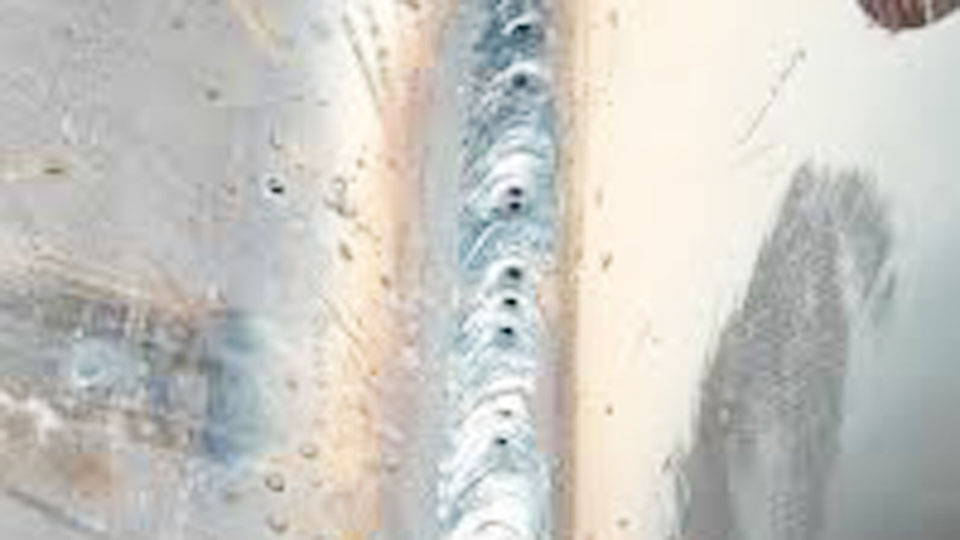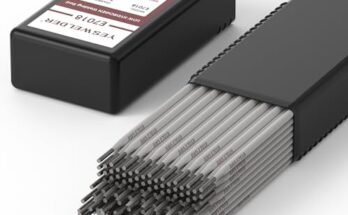If you’ve ever finished a MIG weld, only to find tiny holes and voids ruining your work, you’re not alone. That’s porosity, and it’s one of the most frustrating defects in welding. It weakens the weld, makes it look terrible, and can even lead to failure under stress.

Image by boyiprototyping
I’ve dealt with porosity in MIG welding plenty of times, and I know how important it is to identify the causes and apply the right solutions. If you want clean, strong, and professional-looking welds, preventing porosity should be one of your top priorities.
I’ll walk you through what causes porosity, why it happens, and how to stop it so you can improve your welding skills and get better results every time.
What is Porosity in MIG Welding?
Porosity is a welding defect that occurs when gas gets trapped inside the molten weld pool, forming small holes or cavities as the weld solidifies. These trapped gases can come from contaminants on the metal, shielding gas issues, moisture, or improper welding techniques.
Porosity isn’t just an appearance issue—it seriously weakens the weld by reducing its structural integrity. That’s why it’s critical to understand the causes and prevent it before it ruins your work.
Why is Porosity a Problem in Welding?
Porosity in a weld creates weak points that can lead to cracking, leaks, and failure. Here’s why it’s a big issue:
- Reduces weld strength – Tiny holes in the weld make it weaker than a solid, properly fused weld.
- Compromises appearance – Porosity makes the weld look rough, unprofessional, and full of holes.
- Fails quality inspections – Many industries, including structural welding and pressure vessel welding, have strict standards. Porosity can lead to rejected welds.
- Causes leaks in pipes or tanks – If you’re welding anything that needs to be airtight or watertight, porosity can cause serious issues.
If you want strong and durable welds, you need to eliminate porosity from your MIG welding process.
Common Causes of Porosity in MIG Welding
Porosity can be caused by several factors, including gas shielding problems, contamination, moisture, and welding technique mistakes. Let’s go through each cause and how to fix it.
Poor Shielding Gas Coverage
One of the biggest causes of porosity in MIG welding is inadequate shielding gas coverage. The shielding gas protects the weld pool from oxygen, nitrogen, and moisture in the air. If there’s not enough gas coverage, these elements mix with the molten metal, creating porosity.
How to Prevent It
- Check gas flow rate – A proper flow rate is 20–25 cubic feet per hour (CFH). Too low, and it won’t protect the weld. Too high, and it creates turbulence, pulling air into the weld.
- Inspect hoses for leaks – A damaged gas hose can cause inconsistent shielding.
- Use the right gas – The most common mix for MIG welding mild steel is 75% Argon and 25% CO₂. For aluminum, pure argon is used.
- Position the nozzle correctly – Keep the nozzle close to the weld (about ½ inch away) for effective gas coverage.
- Shield from wind – If welding outside, use screens or weld in an enclosed space to prevent wind from blowing away the shielding gas.
Contaminated Base Metal
Dirt, grease, oil, rust, and paint on the base metal release gases when heated, which can cause porosity in the weld. Even light surface contamination can lead to tiny air pockets in the weld.
How to Prevent It
- Clean the metal before welding – Use a wire brush, grinder, or solvent to remove dirt, rust, and paint.
- Use a degreaser for oily surfaces – Even small traces of oil or grease can cause porosity.
- Remove moisture – If the metal is wet, dry it completely before welding.
Moisture in the Welding Environment
Moisture is a hidden culprit that leads to porosity. When water vapor enters the weld pool, it turns into hydrogen gas, which forms small holes in the weld.
How to Prevent It
- Store filler wire properly – Keep your welding wire in a dry, sealed container to prevent moisture absorption.
- Preheat thick metal – Preheating removes moisture from the surface of thick steel before welding.
- Avoid welding in humid conditions – If the air is humid, use a dehumidifier in your welding area.
Faulty or Dirty Welding Wire
Your welding wire plays a big role in preventing porosity. If the wire is rusty, dirty, or of poor quality, it can introduce contaminants into the weld.
How to Prevent It
- Use clean, high-quality wire – Cheap or rusty wire can introduce impurities.
- Store wire properly – Keep it in a dry place to prevent rust and moisture absorption.
- Check for feeding issues – If the wire isn’t feeding smoothly, it can cause irregular gas shielding.
Incorrect Welding Technique
Your welding technique can also contribute to porosity. If the arc length is too long or if you move too fast, you won’t get enough gas coverage, leading to porosity.
How to Prevent It
- Use the right arc length – A short arc length (⅜ inch or less) ensures good gas shielding.
- Keep a steady travel speed – Moving too fast can cause the gas shield to be ineffective.
- Hold the torch at the correct angle – A 10–15 degree push angle is recommended for proper shielding.
Common Causes of Porosity and How to Fix Them
| Cause | Solution |
|---|---|
| Low gas flow rate | Set flow rate to 20-25 CFH |
| Wind blowing away gas | Weld in a shielded area |
| Rust, oil, or paint on metal | Clean thoroughly before welding |
| Moisture in the base metal | Dry or preheat metal |
| Poor-quality welding wire | Use clean, dry wire |
| Incorrect torch angle | Maintain 10-15 degree push angle |
How to Identify and Fix Porosity in a Weld
If you see small holes in your weld after finishing, you probably have porosity. Here’s how to fix it:
- Visually inspect the weld – Look for small pinholes or bubbles in the weld.
- Grind out the porous area – Use a grinder to remove the affected section.
- Clean the metal – Make sure the surface is completely free from contaminants.
- Check gas flow and wire quality – Ensure you’re using the right gas flow and clean wire.
- Re-weld using proper technique – Keep the arc short, maintain a steady speed, and ensure good gas coverage.
Conclusion
Porosity is one of the most common welding defects, but it’s completely preventable. The key is to control shielding gas, clean the metal, prevent moisture contamination, and use proper technique.
If you take the right precautions, you’ll get strong, clean, and professional-looking welds with no unwanted holes. Next time you’re welding, pay close attention to gas flow, metal prep, and your technique—it makes all the difference.
FAQs
What is the main cause of porosity in MIG welding?
The most common cause is poor shielding gas coverage, often due to low gas flow, wind, or improper nozzle positioning.
Can porosity cause a weld to fail?
Yes, porosity weakens the weld and can lead to cracks, leaks, and failure under stress.
How do you remove porosity from a weld?
Grind out the affected area and re-weld using proper shielding, clean metal, and correct technique.
Does too much gas cause porosity?
Yes, excessive gas flow creates turbulence, pulling air into the weld and causing porosity.
What is the best gas for MIG welding?
For mild steel, use 75% Argon / 25% CO₂. For aluminum, use 100% Argon.
